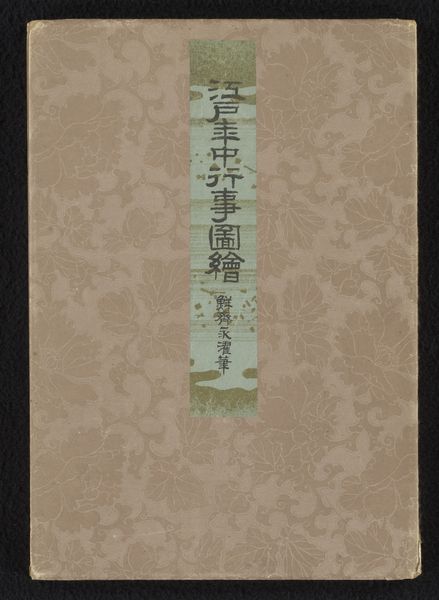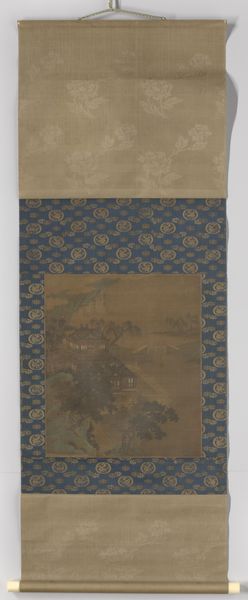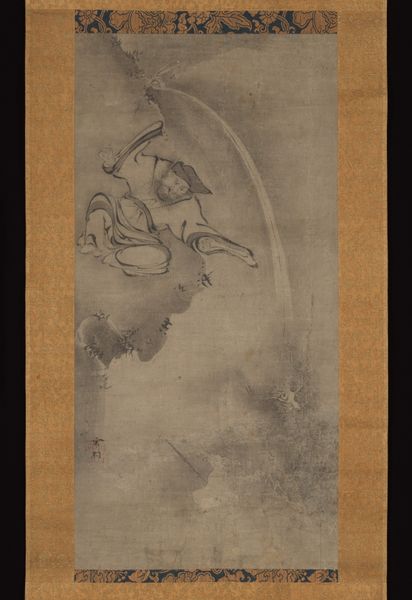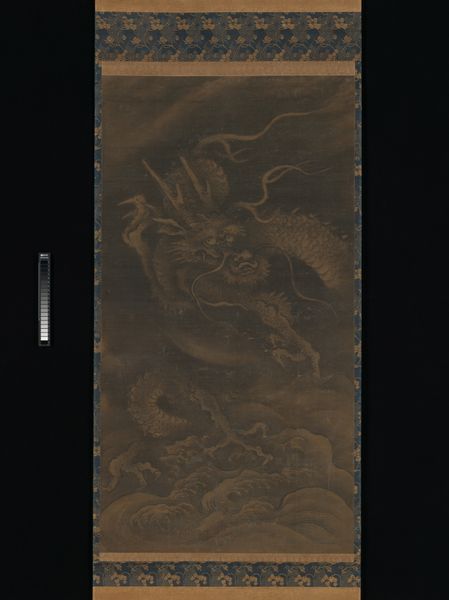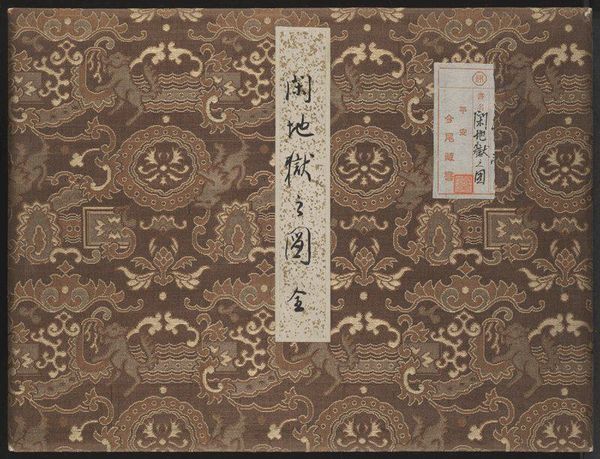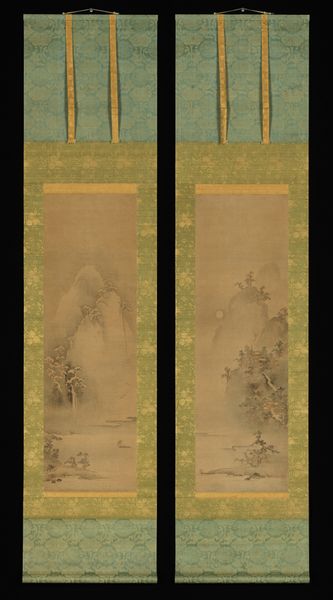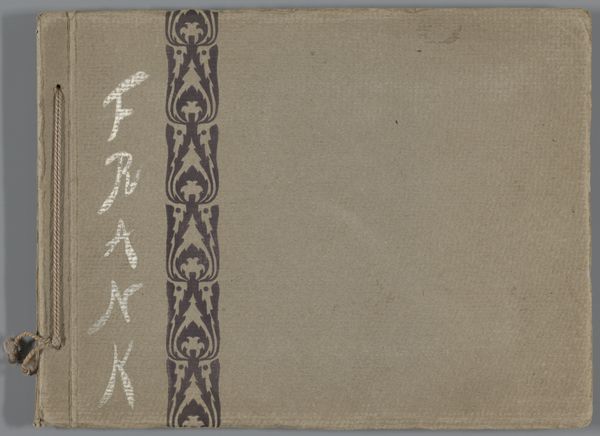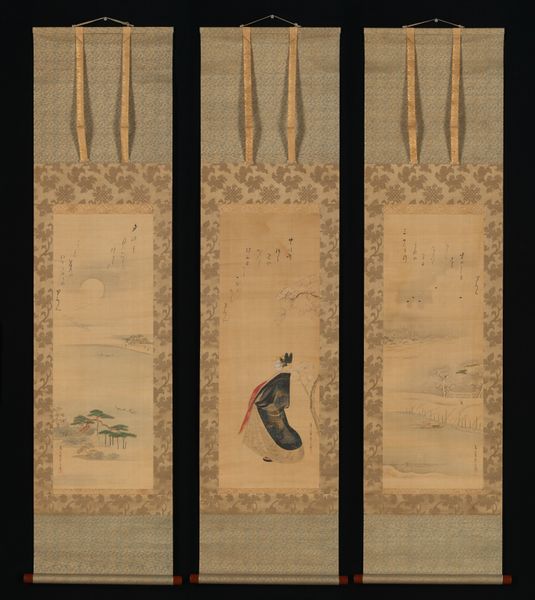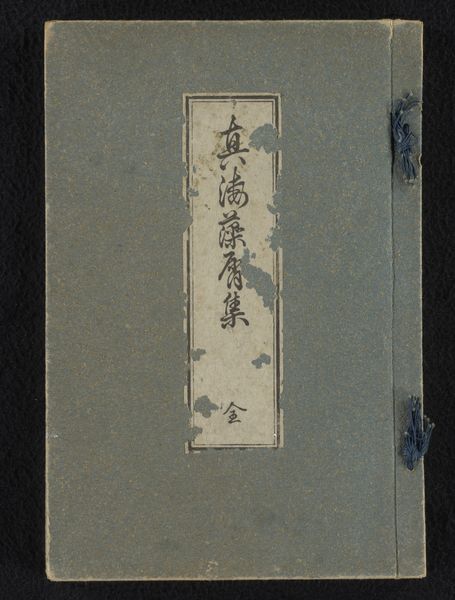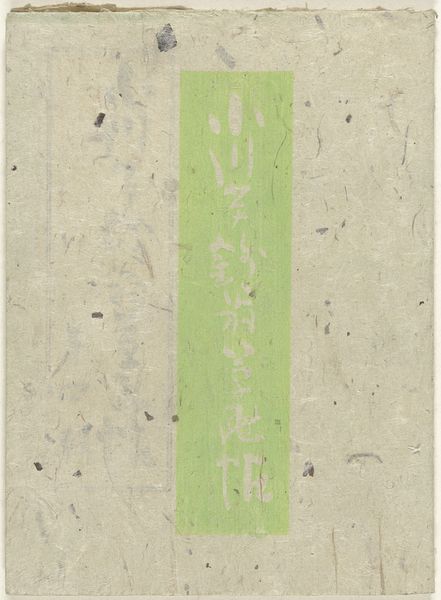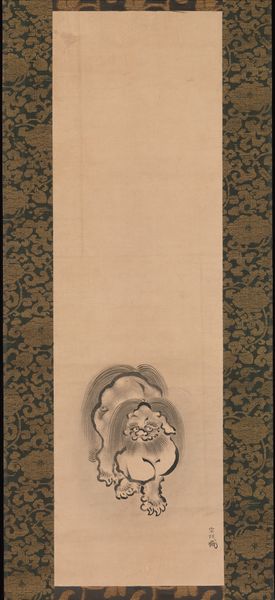
textile
#
pattern
#
asian-art
#
textile
#
geometric pattern
#
organic pattern
#
geometric
#
repetition of pattern
#
pattern repetition
#
textile design
#
decorative-art
Dimensions: height 221 mm, width 154 mm
Copyright: Rijks Museum: Open Domain
Editor: We’re looking at “Japanse kinderen,” or "Japanese Children," from 1731, created by Nishikawa Sukenobu. It seems to be a textile, perhaps a book cover? The intricate gold pattern against the deep blue is really striking. What stands out to you, looking at it from an art history perspective? Curator: What is most compelling about this textile is how it synthesizes distinct graphic elements. Notice the repetition of the underlying, almost ghost-like motif juxtaposed with the perfectly centered, vertical gold panel. Semiotically, there is tension between these figures—almost a battle. What do you make of the shapes and figures woven into the textile? Editor: I see rounded shapes… and sort of angular, geometric figures too. They feel somewhat like abstracted animals or even characters from a story, maybe a dragon. Curator: Indeed. Observe how these shapes lack sharp contours. Instead, we are presented with amorphous boundaries; the space becomes less defined, prompting the viewer to construct meaning. From a purely formal viewpoint, how would you say that this piece operates as a mode of communication through geometric and organic repetition? Editor: Well, the repetition definitely creates a sense of rhythm and perhaps harmony but the different qualities of each motif seem to offer variation from the potential monotony of repetition. Curator: Precisely. This rhythm contributes to an aesthetically pleasing textile and also reflects Sukenobu's intention to capture a unique interpretation. Do you see now that these elements create complexity? Editor: Yes, I see that now. Focusing on how those choices affect the overall aesthetic is really helpful. I hadn’t thought about pattern having that kind of structural importance before. Curator: I'm pleased I could offer a new perspective. Engaging in thoughtful reflection using our refined methodology ensures our insights retain rigor.
Comments
No comments
Be the first to comment and join the conversation on the ultimate creative platform.
